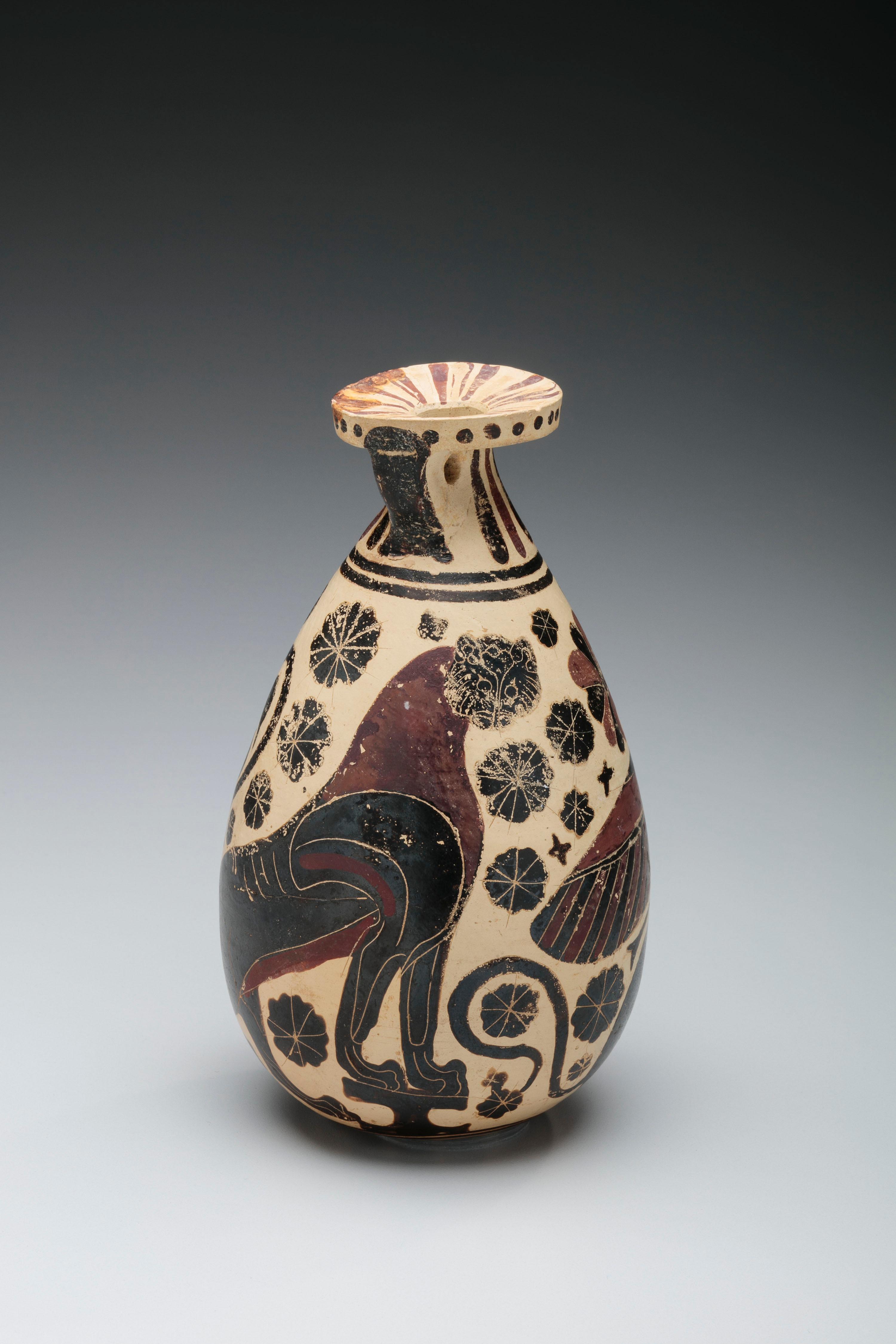Alabastron (container for scented oil)
Artist: A painter related to the Columbus Painter and the Luxur Group (Greek)
Date: about 600 BCE
Dimensions:
H: 6 15/16 in. (17.6 cm); Max Diam: 4 in. (10.2 cm); Diam (rim): 2 9/32 in. (5.8 cm)
Medium: Wheel-thrown, slip-decorated earthenware with incised details
Place of Origin: Greece, Corinth
Classification: Ceramics
Credit Line: Purchased with funds from the Libbey Endowment, Gift of Edward Drummond Libbey
Object number: 1971.135
Label Text:The latter half of the seventh century BCE saw the rise of the “Orientalizing” period in Greek art. The introduction and influence of styles and motifs from the ancient Near East, namely Phoenicia (modern Israel, Palestine, and Lebanon), Egypt, and Syria, began to spread through the Mediterranean world. Artists began to shift away from the typical geometric patterns decorating their work, adopting newly fashionable Eastern motifs such as flowers, mythological creatures, and animals. This alabastron, used for storing oils and perfumes, is an example of this new “orientalizing” taste in art with its Eastern panther on the pedestal and sphinx (part human, part lion, part bird) crouching with wings displayed.
On view
In Collection(s)




